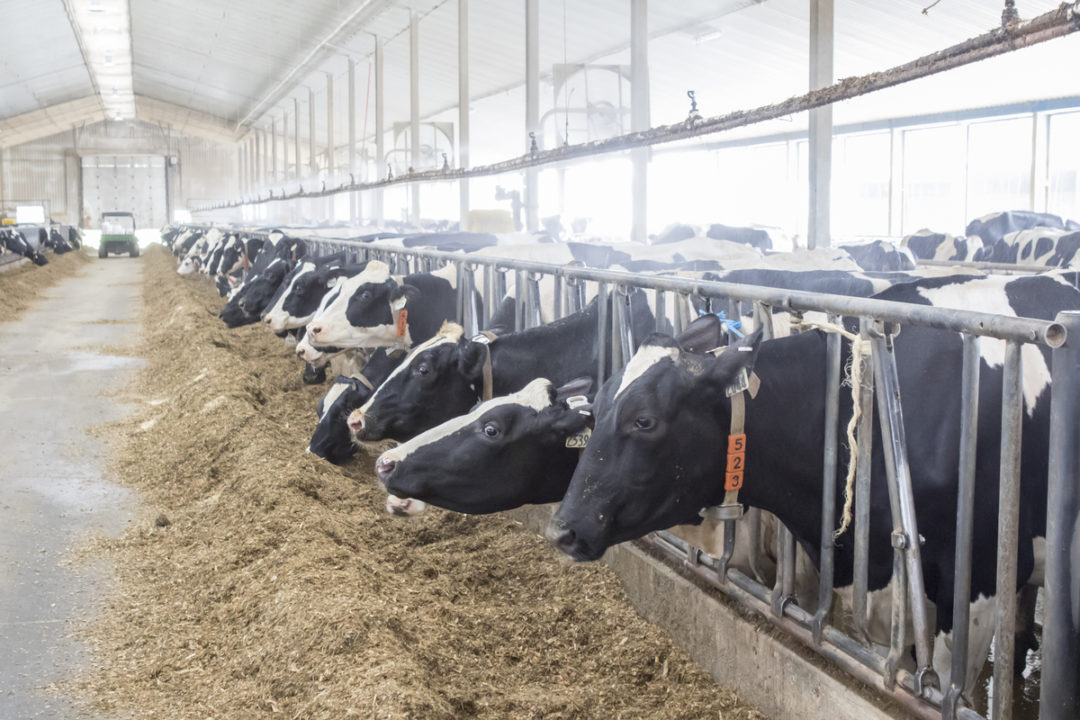Millions of cows around the world consume diets that have been formulated as optimally as possible. Nutritionists take nutrient data for the ingredients available and build the rations believed to support the best production at the best possible cost.
Animal performance (health, reproduction, growth, milk/component production) is dependent on nutrition. Proper nutrition is dependent on using a set of ingredients mixed, delivered and fed in the correct manner so absorption of the nutrients delivered is optimized. This concept is basic and has been discussed and researched repeatedly for years. Accomplishing the task is much more difficult.
Over recent years, the dairy industry has begun to recognize and focus on feed efficiency. Other livestock and poultry enterprises used feed efficiency as a measurement of profitability long before the dairy business. Until recently, we focused on dry matter intake (DMI) – particularly maximizing DMI. We have worked for years to first balance rations as best we knew how, and second, to feed in such a manner that the DMI was the highest it could be at any given point in time, constantly pursuing maximum milk production.
As we began to better understand dairy cow nutrition and creating a better balance of nutrients, and better recognizing economic effects, it became apparent that maximizing DMI and milk production may not always produce the best economic outcome. This is particularly true in the current commodities markets, where cost is so exceptionally high. Optimizing feed efficiency (i.e., maximizing milk per feed or a focus on income over feed cost) is a better goal.
The question becomes: How does the farm improve nutrient absorption, i.e., getting the most nutrient from given ingredient sources? For the major ingredients, especially forages, this becomes a matter of sourcing the best-quality forages possible, whether grown or purchased at the best cost possible; and regular sampling and analyses so nutrient levels and estimated digestibility are known values. Secondly, ration formulation needs to be done as best possible because the content and availabilities of certain nutrients (carbohydrate components) have an effect of overall dry matter digestibility, which affects the availability and potential absorption of other nutrients (protein components, fatty acids, minerals and vitamins). Remember that ration rate of passage, i.e., how quickly or slowly the ration is consumed, fermented in the rumen and digesta, including products of fermentation, move through rumen system compartments and down through the intestine for nutrient absorption. If too fast, feed and forage particles are not provided adequate time to be optimally broken down, fermented and later absorbed. Too slow, and overall DMI may be reduced. In either case, nutrient yield and absorption is affected.
Increasing nutrient yield and absorption
Aside from the basics described previously, there are several “tools” available to enhance rumen function, modify fermentation – increasing nutrient yield – and improve overall digestive tract health, which will hopefully increase absorption. These include:
1. Rumen buffers – These may include sodium bicarbonate, sodium sesquicarbonate, algal calcium sources, all of which work to buffer the rumen. Often ration starch content may be higher than preferred due to reduced energy intake from forages because of temperatures or quality. Higher ration starch levels can depress rumen pH, which may negatively affect bacterial activity. Buffer feeding can support rumen pH so rumen microbes can function normally.
2. Bacterial, yeast, fungal feeding – An assortment of microbial-based feed additives have been fed for years with varying responses. The goal is to improve rumen function, including stimulation of certain rumen microbe populations (i.e., increasing various fiber fermenters), reducing oxygen levels in the rumen, provision of specific nutrients that are particularly useful to certain microbial populations, supplying various enzymes that can be advantageous for improved digestion of various fibers, proteins, starches and fats.
This is a very broad-based and complex area of study. There are a variety of bacterial products, yeast products and fungal products available for this purpose. While there are no “silver bullets,” research indicates there are some that work better than others. It is important that the dairy and the nutritionist understand the specifics of each of these products and what they are designed to do. For instance, certain bacterial and fungal products are designated to be “enzyme sources,” but no specific enzymes, substrates or activity rates are indicated. These can be referred to as “crude enzyme sources.” The manufacturer knows these products are sources of enzymes but not much else. It is important to use a product that specifies the substrate (specific fiber, starch, protein, etc.) it has activity on. Certain products will even guarantee an activity rate. Properly selected and used, enzyme sources can be a cost-effective tool for improving production while feeding the current diet or help maintain production while reducing the use of some or all feed ingredients.
3. Plant extracts, phytobiotics, essential oils – All three of these are descriptors of the same product type. These are derivatives of a wide variety of plant species where oil-based extracts are shown to provide a variety of benefits when fed to the animal. This is a very interesting area of study, although quite complex. Research has shown that various plant extracts can perform different roles in the rumen when fed to the animal. Ideally, the outcome is to increase nutrient yield by either increasing fiber digestion, energy yield from volatile fatty acid (VFA output), modifying microbial protein yields, etc. Again, the desired results are to increase nutrient yield and availability to the animal at the point of absorption. There is developing research in this area showing positive responses with both individual plant extracts or combinations.
4. Antibiotic type additives – The most well known of these is Rumensin. Rumensin is an antibiotic technically known as an ionophore. When fed, it will select against a certain type of bacterial population that tends to be less efficient in producing various fermentation products.
5. Yeast cell wall (YCW) products – Certain yeast products, mostly derivatives of Saccharomyces cerevisiae (most common in dairy cattle feeding), provide significant levels of cell wall components, primarily mannanoligiosaccharides (MOS) and beta-glucans, which are structural carbohydrates and have unique activities in the small intestine. The primary function is to bind certain pathogens and toxins in the gut as well as stimulating the immune response of the epithelial lining. The functions work collectively to improve gut health and reduce inflammation, which can reduce nutrient absorption. Not all yeast products or yeast cultures are useful sources of YCW.
These products can be expensive, so selections should be made carefully. Some combinations are also effective and can be synergistic. But again, care should be taken during the selection process to ensure cost effectiveness.
Mineral antagonisms
Almost everyone has seen the mineral interaction figure which shows how various minerals can interact with one another, potentially depressing the absorption of one mineral or another. It is well known that high potassium levels coupled with low phosphorus can negatively affect magnesium absorption. This is commonly seen in more mature cattle grazing winter annuals. Likewise, high sulfur and molybdenum can bind with copper in the rumen, creating insoluble complexes where the copper is unavailable to the animal. High zinc or iron levels can also interfere with copper absorption.
These interactions are known as antagonism and can cause significant problems with health and reproduction. Awareness of forage and feed mineral values are important, as well as familiarity with the large variety of mineral sources available. This topic was discussed in a previous issue of Progressive Dairy (“A practical understanding of trace mineral sources”). Proper formulation and use of effective mineral sources reduce antagonism and promote proper mineral absorption in all production groups.
Conclusions
In today’s dairy economic environment, it is more important than ever for the dairy producer to be able to get everything possible out of the expensive forage and feeds used to feed the cow. Focusing on maximizing nutrient availability and absorption is critical to develop and maintain a cost-effective nutrition program.











